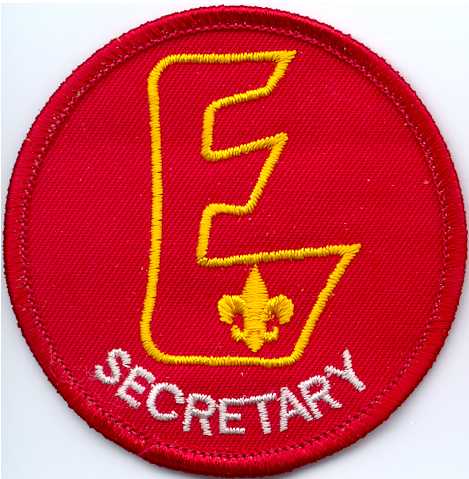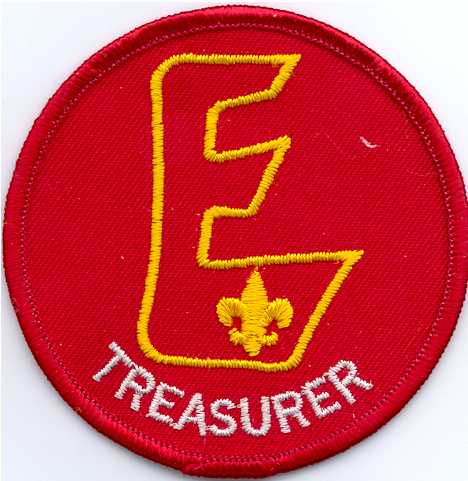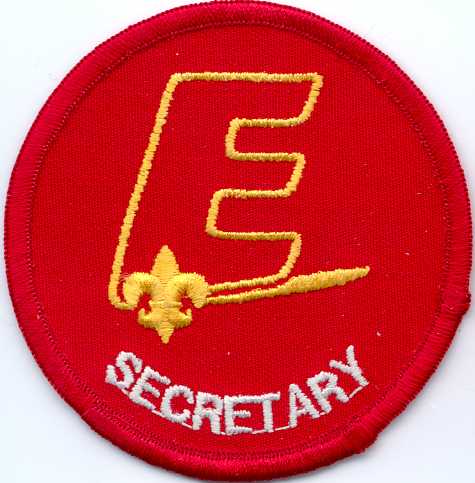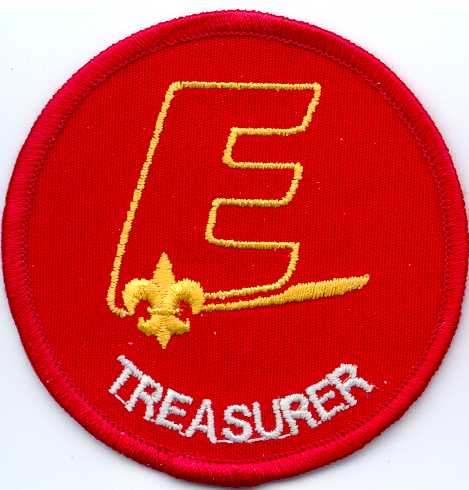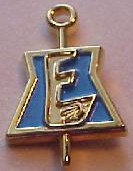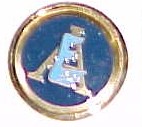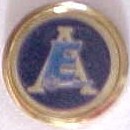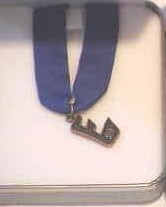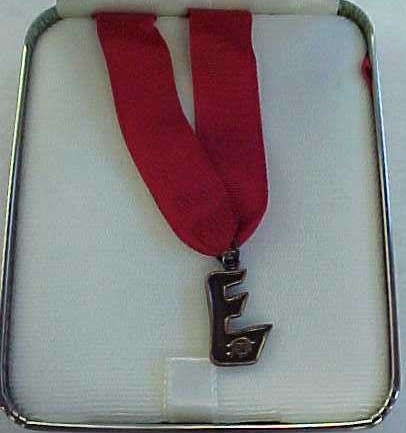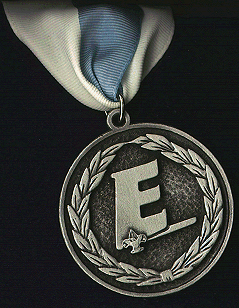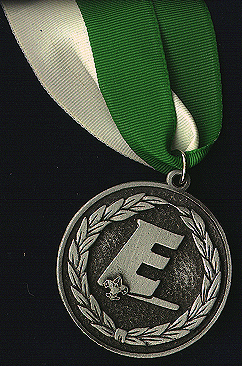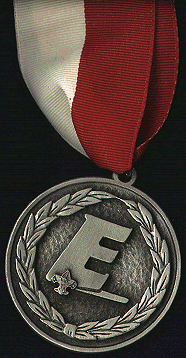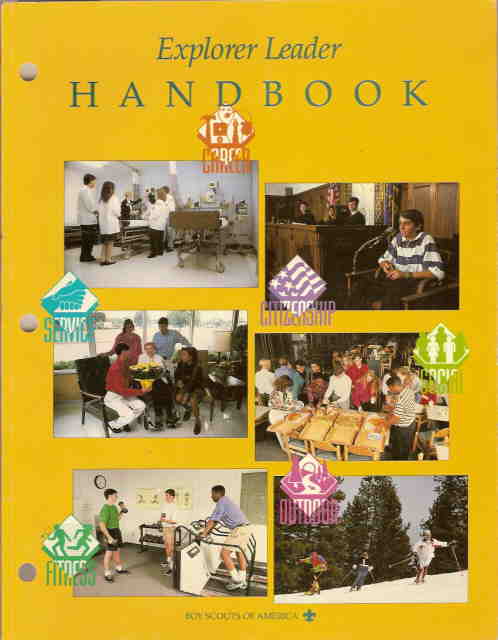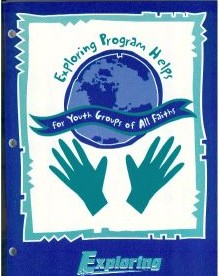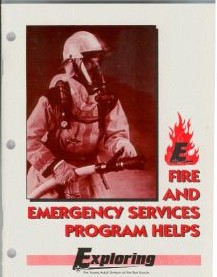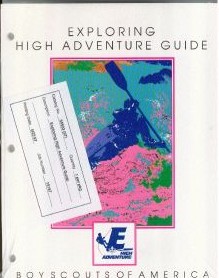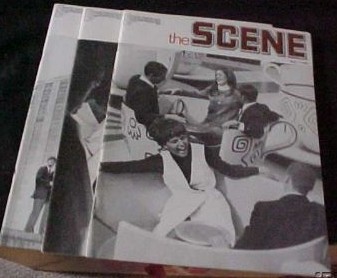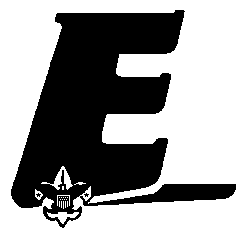 Exploring (1969-1998)
Exploring (1969-1998)
Overview
In 1969, National established the Exploring Division. While the basic Exploring program established in 1959 continued, over
the next couple of decades, changes did occur. As there is no clear
dividing point in these changes, we'll cover them all here. Probably one
of the major changes with Exploring was it going co-ed. In 1969, girls
could participate with post programs as "Explorer Participants" not
members, however they had to be members of an 'associated' group like Girl
Scouts or
Part of the change in the Exploring program was due to the work of
In August of 1998, it all came to an end. At that point, National split Exploring in two. The various career oriented Exploring Posts, as well as the Career Awareness Exploring, would be moved over to the BSA's Learning for Life subsidiary, after which they would be refereed to as the Learning for Life/Explorers. By doing so, Explorers would no longer be members of the BSA, no longer needing to adhere to BSA membership standards. The rest of Exploring: the arts/hobbies, sports, youth group, outdoors, etc., plus the Sea Explorers (now renamed Sea Scouts), would form the new Venturing Division. This was pretty much a name change, as the Venturing program was almost identical to the pre-1998 Exploring program in most ways.
The Changing Exploring Logo
During this time period, we would see 3 Exploring logos emerge. At first,
the "Circle-V" logo of the 1960 Exploring would continue. However, on
Exploring literature it would usually appear in the bottom of a "Big
E". Around 1971, this Big E with the "circle-V" would
become the new Exploring logo, and would appear on patches and insignia.
This emblem would continue through the 70s.
In 1982 or so, someone probably realized that no one knew what that
"circle-v" thingie in the bottom of the Big E was for, because
National hadn't bothered to explain what it meant since the 60s. So they
dropped the "circle-v" and just put a fleur-de-lis in its place.
Then in 1990, the Big E was replaced by a more modern one, with the Big E on
top of the fleur-de-lis and a line. This one is usually referred to as
the Big E version 2, or "Big E on line".
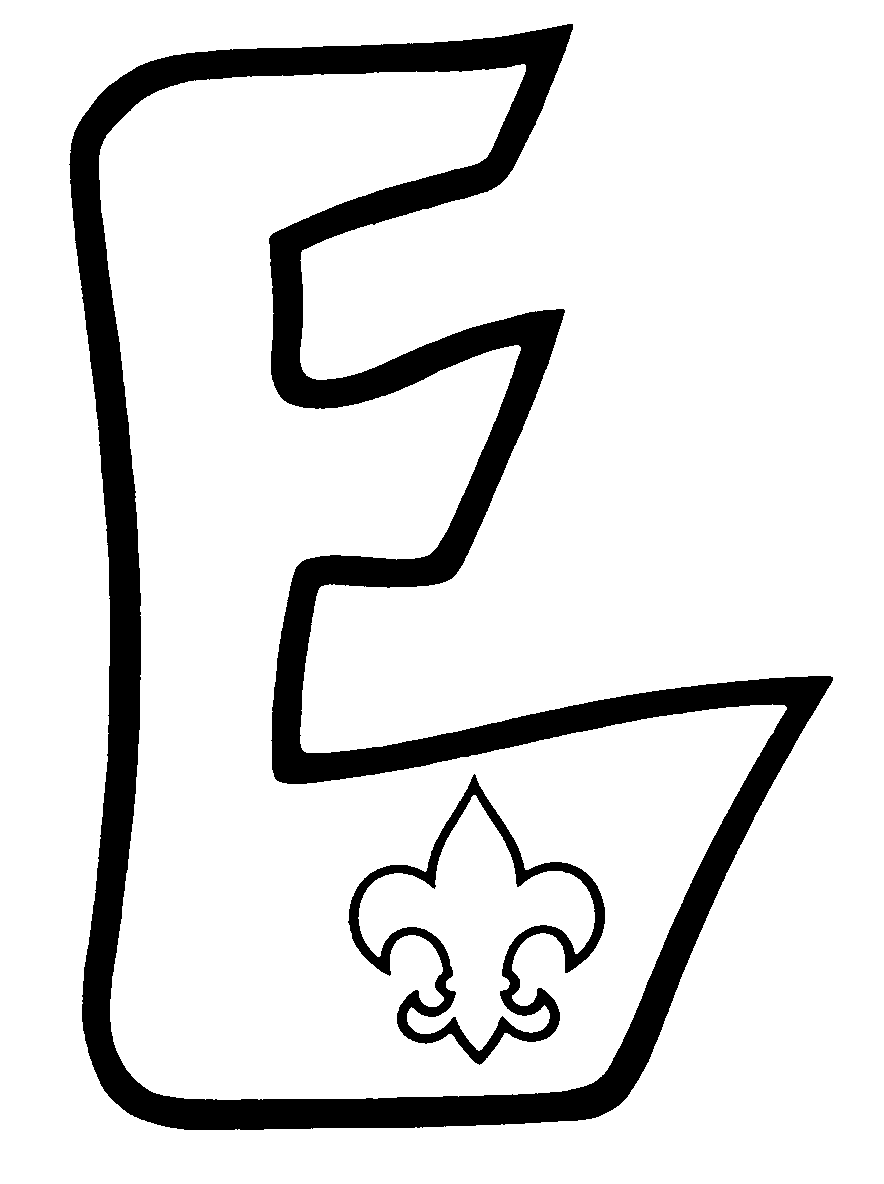

With the changes in the logo, we would see a variety of patches being made. Most of the patches would appear with each of the 3 logos. This would include generic Explorer emblems for wearing on uniforms and jackets, and specialty patches for the different National Explorer clusters, as well as for various national Explorer activities.
The Explorer Code
As an Explorer-
I believe that
I will, therefore, be faithful in my religious duties and will maintain a
personal sense of honor in my life.
I will treasure my American heritage and will do all I can to preserve and
enrich it.
I will recognize the dignity and worth of my fellow men and will use fair play
and good will in dealing with them.
I will acquire the Exploring attitude that seeks the truth in all things and
adventure on the frontiers of our changing world.
The Explorer Motto (dropped at some point)
Our Best Today, For a better Tomorrow.
Exploring Program
The Exploring program of the 70s, 80s, and 90s did not so much change the
program of the 60s as expand and refine it. The basic idea of the six
experience areas, superactivities, and like continued.
What did change was the management of the Exploring program. The main change occured in 1969, when the monthly Explorer Roundtables and District/Council Explorer Cabinets were replaced with quarterly Program Planning Conferences at the district & council levels. Later on, most likely around the early 1970s, Explorer President Associations would be formed. Explorer Posts would soon be supported by a Service Team of the Explorer Committee, instead of Unit Commissioners. Eventually, what evolved was that the Post would be supported by their own Executive and Committee separate from the Council/District committees supporting Cub and Boy Scout programs.
More so then in the 60s, Exploring posts would be marked by specialty posts,
especially the "Career-Awareness Explorers". A
National Explorer Clusters
The growth of various career-awareness posts would lead to the creation of
certain National clusters in the early 80s in the area of Law Enforcement, Law
and Government, Medical/Health Careers. Fire/Rescue, Aviation, Science &
Engineering, Outdoors, Sea Exploring, and Business. Later these would
expand to other clusters like Arts & Hobbies, Communications, and
Sports. Some National insignia was created for some of these clusters.
The Explorer Presidents'
Association/Explorer Officiers' Association
In 1969, the old Explorer Cabinets of the 60s were eliminated, to be replaced
by the council-level Exploring Program Planning Conference, which were biannual
gatherings of Exploring youth and adult leaders. Eventually, probably
around 1971, they established the Explorer President Associations (EPA) in
councils, which were later renamed Explorer Officer Association (EOA) around
the mid-1990s. EPAs brought together Post Presidents and Ship Boatswains
within a council, while EOAs included all post officers. These groups
would be involved with planning out the Explorer program at the council and
district levels, and would represent the needs of Explorers to the council
executive committee. At National Exploring meetings, these people would
represent their units in electing the Exploring National and Regional
leadership.

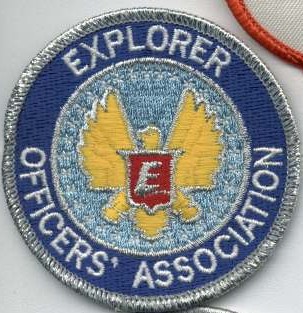
National Explorer Presidents
and Cabinets
The following youth were elected as National Explorer Presidents and Regional
Representatives (sometimes called National Vice-Presidents) at the National
Explorer President's Congress, later at the Explorer President's Association
Congress and then National Explorer Leadership Conference. Along with
their cabinet of Vice Presidents/Regional Representatives, these formed the
youth leadership of Exploring. In addition to being the youth member of
the National Exploring Committee, the National Exploring President is also a
youth member of the National Committee. Thru at least the 70s, there were also
Area Chairman, who would often times have area-level conferences, and act as a
conduit between council EPAs and the Regional/National Officers. Not sure
how long these positions lasted. The 1998 officers would become the National
Venturing Officers after the Exploring/Venturing split.
1971-72 Larry Simpson; Joseph R. King (R1), Roland J. Vega (R2), Kenneth E.
Spann (R3), Tony Dryak (R4), Roy Curry (R5), Harry Tobin (R6), Bob De Mott
(R7), Michael L. Bell 2nd VP (R8), John Luttrell (R9), David Enge (R10) Dirk
Edwards (R11), David Ellis 1st VP (R12)
1972-73 Larry Eisenberg; Gary Cross (EC), Paul Watts (SE), Merilyn Hembree
(W), David McKay (NE), Tommy Vigil (SC), David Nichols (NC)
1973-74 Steve Pollei; Terrell Clay (SE), Mark Killian (W), Beth Caruso (NE),
Ray Cachares (EC), Craig Porter (SC), Linda Hoy (NC)
1974-75 Mary Wright; Gary Griffiths (W), Steve Manley (SC), Steve Rafsky (NC),
Larry Zdersky (EC), Scott Sorrels (SE), Anne Karpowich (NE)
1975-76 Larry Carpenter; Jeff Hill (W), Randy Bechman 1st VP (EC), Lee Hinds
(NC), Paul Bertino (NE), Curt Rom (SC), Jack Wilkes (SE)
1976-77 Richard Davies; Jeff Light (NC), Tina Rae Myers (EC), Richard Renjilian
(NE), Richard Evertt Horne (SE), Larry Lee Warner (SC), David E. Gray (W).
1977-78 Robert McMiller; Craig Burkhardt (EC), Steven Foster (SE), David
McKnight (W), Thomas McGann (NE), Mark Rom (SC), Lori Small (NC)
1978-79 Nancy Winecoff; Chris Finley (NC), Gary Smith (W), Tom Smith (EC), Mark
Thirion (SC), Brian McDonnell (NE), Robert Davis (SE)
1979-80 Kirk White; Wendy Emmons (NE), Michael Tillson (SE), David Kanovs (EC),
Dennis Grady (NC), Tod Ingram (SC), Rod Hutchins (W).
1980-81 Jeff Shimer; Celeste Olschner, Keith Richardson, Brian Butz, Clark
Allan, Wayne Hentrup, Robert Spence
1981-82 Chuck Wolfe; Kelly Newton (SE), Kevin Sabo (NC), Chip Schneider (SC),
Max Williams (W), Ron Kneise (EC), Matt Delson (NE)
1982-83 David Greenfield; Richard Robinson (SE), Leslie Rosenbush (NE), Teri
Thomas (SC), Janice Brand (NC), Mark Reiber (EC), Chris Sliney (W)
1983-84 Lee White; David Neil (VP)
1984-85 Brian Sims; Todd Rehfuss (W + VP), Todd Jeffrey, Lori Ann Beatty (NC),
Ruth Mary White (SC)
1985-86 David Lohmeier
1986-87 John Troiano; Patrick Schoof (VP)
1987-88 Patrick Schoof;
1988-89 Brian Hobbs; Michael Burgin (VP)
1989-90 Michael Burgin
1990-91
1991-92 ??; Lori Angel (NC), Chip Yarbrough (SE), Mark Bass (EC), Phil Tesarah
(SC), Bill Logg (W)
1992-94
1994-96 Geoff Smarte prez + (W); Tonia Badura (C), Brian Schad (NE), Shana
McElroy (SR)
1996-98 Shana McElroy; Sylvester Tan (SR), Tanya Karsch (NE), David Anthony
Nieglos (W), Ryan J. Kelley (C)
National Explorer Activities
|
|
Starting in 1971, a National Explorer President's
Congress would be held each year. This replaced the previous National
Explorer Delegate Conference of the 60s. The last one was held in
1982, after which it was split into two events: the National Explorer
Conference and Explorer President's Association Congress.
NEPCs from 1971 thru 1979 were held in |
|
1978 |
1979 |
|
1981 |
|
National Explorer President's Congress
1971 Washington, DC
1972 Washington, DC
1973 Washington, DC
1974 Washington, DC
1975 Washington, DC
1976 Washington, DC
1977 Washington, DC
1978 Washington, DC
1979 Washington, DC
1980 Phoenix, AZ
1981 Indianapolis, IN
1982 Philadelphia, PA
The biennial National Explorer Conference started in 1984. In
1994 it became the National Explorer Leadership Conference with the last
one held in 1998. These events was designed to bring together all
Explorers from around the country. This event had training, athletic
competitions, the National Explorer Congress, and more.
|
|
1986 NO PICTURE |
1988 NO PICTURE |
1990 NO PICTURE |
1992 NO PICTURE |
National Explorer Conference
1984
1986
1988
1990
1992
National Explorer Leadership Conference
1994
1996 Northern Arizona University
1998
|
|
The annual Explorer President's Association Congress began in 1983. The last one in 1986. It was held with the National Explorer Conference when they occurred in the same year. After it ended as a separate event, it was merged into the National Explorer Conference and run as part of it and the later National Explorer Leadership Conference. The congress was intended to bring together the youth leadership of Exploring together to determine where Exploring was going and elect the Regional and National Exploring leadership. Explorer President's Association Congress |
There were at least four National Aviation Explorer Fly-ins held in
1979 (
|
|
|
|
|
A National Law Enforcement Explorer Conference was held in 1979, 1981, 1983, 1984, 1986, 1988, 1990, 1992, 1994, 1996, and 1998, eventually occurring in conjunction with the NEC/NELC starting in 1996. This event brought together the various Law Enforcement Explorers for an event of fun and training. As far as I know, this event continues under LFL/Exploring for those involved in Law Enforcement Exploring.
There were atleast two National Explorer Search & Rescue Conferences held, the second in 1991. Any others??
There were atleast two National Explorer Space/Science Symposiums
held, in 1979 and 1980. Any others?
|
|
|
The National Explorer Olympics were started in 1970
and occurred every other year at |
|
|
The Explorer Grand National Safe-Driving Road Rally
started in 1969. This event was held each year in |
The National Sailing Championships began in 1966. They were
held each year until atleast the early 1990s. Anyone know how long they
lasted? I had assumed the last was around 1986, as National has stopped
all the various National Explorer events to have only one, but later found out
they ran atleast until the early 90s.
1966
1967
1968
1969
1970
1971
1972 Ft. Worth, TX
1973 San Diego, CA
1974 Rye, NY
1975 Chicago, IL
1976 New Orleans, LA
1977 Long Beach, CA
1978 Chesapeake Bay
1979 Cleveland, OH
1980 ??
1981 ??
1982
1983
1984
1985
1986
1987
1988
1989
1990
1991 Patuxent Naval Air Station,
1992 Patuxent Naval Air Station,
others??
|
|
For the 1989 National Scout Jamboree, National decided to have a separate Explorer Encampment. A special patch was designed for it, which was done as both a pocket patch and a jacket patch. However, not enough Explorers signed up, and it was canceled at the last minute. Those Explorers that did come served on staff, as they had in previous years. No attempt was made to try to do this at subsequent Jamborees. |
Explorer Uniforms
Exploring started to get away from the idea of requiring uniforms.
Instead the concept of Explorer Posts determining their own "Distinctive
Dress Identity" was created. This way each Explorer Post would
determine what THEIR uniform was. For many of the career awareness posts,
this was easy. For Fire/Rescue posts, it was their Fire/Rescue
uniform. For Law Enforcement Explorers, it was their police/sheriff's
uniform. For Medical Explorers, it was their hospital uniforms or lab
smocks. And so on. If a post wanted their uniform to be a polo
shirt and jeans, that was fine. For those who wanted something more
formal, the blazer uniform was available, and it appeared most of the National
Explorer leadership of this period wore them. For those who wanted a more
traditional BSA uniform, the BSA field uniform in green or tan was available.
Exploring continued to make available the traditional forest green uniforms at first. They dropped it around 1979, as they figured not enough people wore them. After that point, if Explorers wanted to have a BSA uniform, it would be the tan Boy Scout uniform, but with forest green shoulder loops to indicate they were Explorers. The office strips that were made on forest green would then be made on tan. Then in 1987, National would come out with round office patches to go on the left sleeve like all other BSA office insignia. These would be remade in 1990 with the new Explorer logo. The forest green shirt would come back in 1985 and dropped again in 1990. During this period, the shirt strips said "Boy Scouts of America". It would again be brought back in 1994. During this later appearance, the shirt strip said "Exploring, BSA" on it. Also at this time, uniform policy was changed to say that Explorers had to wear the green shirt and not the tan shirt with green loops. This policy has continued with Venturing, which has inherited the green shirt.

Exploring Advancement
Program
The Exploring program for the most part continued to have no advancement
program. Eagle Scout was still available to male Explorers to earn if
they had earned First Class or higher in a Boy Scout Troop. The special "Explorer-only" requirements that had
existed in the 60s end on December 31, 1971. While there is no proof of
this, apparently this was explicitly done to prevent female Explorers from earning
Eagle Scout.
In 1981, a new Explorer award was created, the Explorer Achievement Award. This award had been developed by the Explorers themselves and approved at their 1977 and 1978 National Congresses. The award could be earned by an Explorer over an 18 month period, and was focused on leadership and personal development, and intended to be as open-ended as possible to take into account the wide variety of Explorer Posts and specialties. The award itself consisted of a lapel pin. In mid-1995, this award would be renamed the Explorer G.O.L.D. Award, the letters standing for Growth Opportunities in Leadership Development. The requirements stayed the same, apparently. The award was changed to a medal pendent. To indicate on their BSA field uniform that they had earned this award, the Explorer could wear the knot originally created for the Silver Award from the 50s.
With the ending of Exploring in 1998, the Explorer GOLD would become the
Venturing Gold Award, with the added requirement of having to earn one
Venturing Bronze Award. LFL/Explorers apparently can still earn the
Explorer GOLD award, but have also seen statements that they can't, so am not
sure.
|
Explorer Advancement Awards (1981-98) |
|||
|
Explorer Achievement Award, version 1 |
|
|
|
Exploring Unit Organization
Explorer posts really didn't change in its organization in the 70s, 80s, and
90s. With the end of the Explorer Cabinet came the end of their office
insignia. The Service Team was really part of the council/district and
served the same purpose of unit commissioner for Cub Scout and Boy Scout units:
ensuring a quality post program.
|
Explorer Office Insignia (1958-79) |
||
|
|
|
|
|
|
|
|
|
|
|
|
|
Explorer Office Insignia (1981-87) |
||
|
Post Committee, NO PICTURE |
|
Associate Advisor, NO PICTURE |
|
|
|
|
|
|
|
|
|
Explorer Office Insignia (1987-89) |
|||
|
|
|
|
|
|
|
|
|
|
|
Explorer Office Insignia (1990-98) |
|||
|
|
|
|
|
|
|
|
|
|
Miscellaneous
I assume that probably sometime in the late 40s or so, that the same training
awards available for Boy Scout leaders were also made available to the various
Senior Scouting leaders (Explorer Scout, Air Scout, and Sea Scout). I know they
stopped the use of the Skipper's Key in 1948. Post Advisors and Ship Skippers
would earn the now renamed Scouter's Key, as they are the key unit leaders, and
their assistants and the Post/Ship Committee chairs and members could earn the
Scouter's Training Awards. To indicate that these awards had been earned
by Explorer leaders, small pins would be put on the knots and medal ribbons to
indicate that the awards had been earned in Explorers, Air Explorers, Sea
Explorers, Exploring, etc. And until around 1978/79, the Scouter's Key
and Scouter's Training Award knots would be made on forest green, navy blue,
and white for these leaders.
Around 1978, it was decided that instead of giving the Explorer leaders
medals, they would instead receive unique lapel pins. This also
corresponds with the ending of the forest-green Explorer uniforms and the knots
on green, white, and blue backings. Since most Explorers (and their leaders) no
longer wore BSA uniforms, this was more appropriate, but those that did wear
BSA uniforms could get the medals and wear the knots. Explorer Advisors
and Service Team members would earn the Exploring Key, and their assistants and
Post Committee would earn the Exploring Training Award. After
the split of Exploring, I am not certain if LFL/Exploring leaders can still
earn the Key and Training Award.
|
Exploring Key and Exploring Training Award (1978-98) |
|||||
|
|
Key, 1982-90; Big E w/fdl |
Key, 1990-98; Big E on line. |
|
Training Award, 1982-90; Big E w/fdl |
|
In 1971, a new award was created in honor of William H. Spurgeon III, who is
credited with creating the modern career-oriented Exploring program and had
passed away in 1970. This award would at first to
organizations/corporations for service at the council and National levels to
Exploring, later in 1988, it would also be given to individuals. For
individuals receiving this award, there would be a lapel pin, plaque, and
knot. For organizations/corporations, they would receive only the plaque.
After the Exploring split, this award is still being given in LFL/Exploring,
NOT Venturing.
|
William H. Spurgeon III Award (1988- present) |
||
|
|
pin, 1990-98 |
|
In 1982, a new Exploring Leadership Award was created. I don't have
much data on these awards, but they were given out at council and area/regional
level to Exploring youth only until 1995. In 1996 they were replaced by a
different set of Exploring Leadership Awards.
|
Exploring Leadership Awards (1982-95) |
|
|
|
|
In 1996, new Exploring Leadership Awards were created. These were
given out at Council, Area/Regional, and National levels to outstanding
Explorers and adult leaders at these three levels. I am uncertain what
the criteria are, but since these awards were replaced by the same kind of
Venturing Awards after the Exploring split in 1998, I have to assume they were
the same. A new Leadership Award was developed for LFL/Exploring, and
given out at the council-level. Can anyone supply me with a list of the
National recipients?? I assume they were given out for the three years of
1996, 1997, and 1998.
|
Exploring Leadership Awards (1996-98) |
||
|
|
|
|
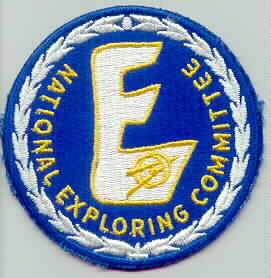 Not sure when this was released or how
long used.
Not sure when this was released or how
long used.
Literature
The closest to a basic manual for Explorers during this period of the program
was the Explorer Member's Guide. This pamphlet gave a very brief
overview of Exploring. Not sure how long it was kept in print, but after
it went away nothing was produced to replace it. While a large number of
pamphlets would be produced by the Exploring Division, most were aimed at
program helps, leaders, or leadership training.
Off and on there would be guides for Explorer Leaders (Officers and Advisors). The last one produced was the Explorer Leader Handbook starting in 1983. It combined the previous Advisor's Guide (#6610), Post Committee Guide (#3154), Explorer Reference Book (#3171), and Explorer Officer's Workbook (#3158). Am unsure of the full publication history of this work.
For information on EPA/EOA, there would be booklets describing them. There was the Explorer President's Association (#6622) booklet introduced in the 70s that apparently was still in print in the early 90s (#34622).
The largest group of manuals produced would be the various Program Helps booklets. Over the years, about 18 different ones would be produced. These would give information on various topics and information for posts to use to develop their program. Interesting enough, the Medical Explorers got their own handbook, which was last printed in 1985.
There were two Exploring magazines for Explorers to read. In 1969, the
Exploring the Scene magazine was introduced. It replaced the Explorer
Program Helps inserts to Scouting magazine, which ended with the April
1969 Program Helps in the February 1969 issue of Scouting. It was to be
published twice a year, in March and October, but only lasted two years. It was
more aimed at the Post officers as a sort of program aid, instead of a magazine
aimed at all Explorers. In 1971, the first issue of Exploring magazine
was published. This magazine was aimed at all Explorers, and tried to have a
variety of articles and information that would appeal to high school and
college age youth. It started off being biannual, then went bimonthly in
1973. In 1981, it became a quarterly, and appeared as both an insert in Scouting
as well as separately. With the ending of the Exploring program, its
last issue would be the Summer 1998 (V27#3) issue. From the volume numbering,
it appears that either they skipped a year or one volume ran over two years.
|
Exploring Literature |
|
|
Exploring Member's Guide
(#3155) pamphlet, 58pg |
|
|
Explorer Leader Handbook
(#6636) Explorer Leader Handbook (#34637)
142pg adult+86pg youth sections |
|
|
Program Helps: |
|
|
Medical Exploring
(#6618) paperback, Dr. Thomas Wachtel, author |
|
|
Exploring the Scene magazine |
|
|
Exploring Magazine |
|
|
Statistics |
||||
|
year |
membership |
units |
Eagle awards |
Achievement awards |
|
1969 |
302,349* |
21,969* |
? |
-- |
|
1970 |
329,192* |
23,306* |
? |
-- |
|
1971 |
396,542* |
25,904* |
? |
-- |
|
1972 |
? |
? |
? |
-- |
|
1973 |
? |
? |
? |
-- |
|
1974 |
? |
? |
? |
-- |
|
1975 |
? |
? |
? |
-- |
|
1976 |
? |
? |
? |
-- |
|
1977 |
398,305 |
22,640 |
? |
-- |
|
1978 |
? |
? |
? |
? |
|
1979 |
? |
? |
? |
? |
|
1980 |
? |
? |
? |
? |
|
1981 |
? |
? |
? |
? |
|
1982 |
? |
? |
? |
? |
|
1983 |
? |
? |
? |
? |
|
1984 |
? |
? |
? |
? |
|
1985 |
? |
? |
? |
? |
|
1986 |
? |
? |
? |
? |
|
1987 |
? |
? |
? |
? |
|
1988 |
361,733 |
? |
? |
? |
|
1989 |
? |
? |
? |
? |
|
1990 |
? |
? |
? |
? |
|
1991 |
? |
? |
? |
? |
|
1992 |
? |
? |
? |
? |
|
1993 |
? |
? |
? |
? |
|
1994 |
? |
? |
? |
? |
|
1995 |
? |
? |
? |
? |
|
1996 |
? |
? |
? |
? |
|
1997 |
? |
? |
? |
? |
|
1998 |
? |
? |
? |
? |
*- includes Ships/Sea Explorers
Updated: 01/17/2006mrb



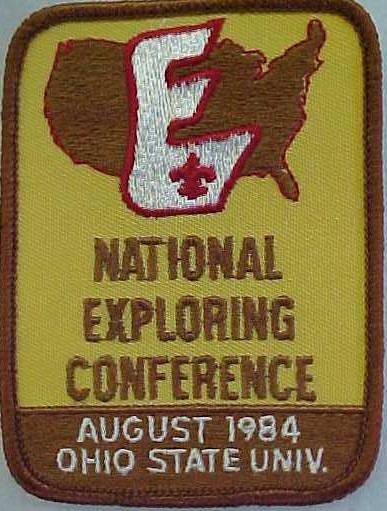
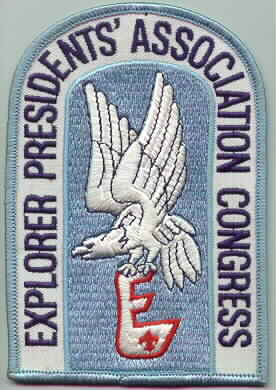

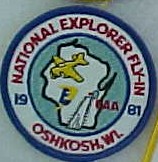

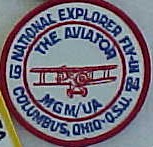
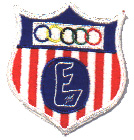
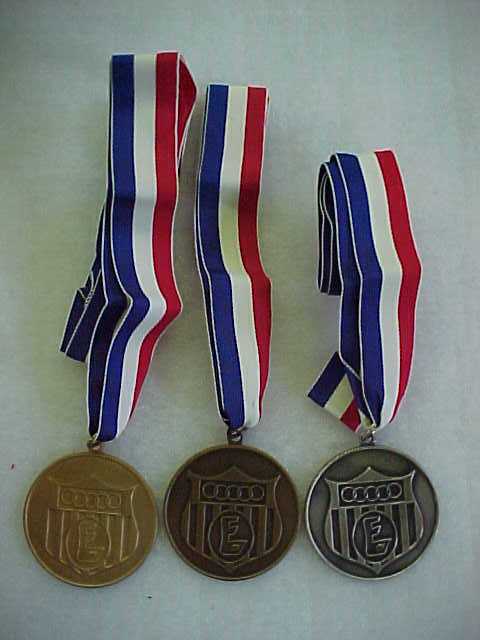

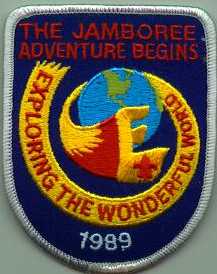
 Explorer
Achievement Award, version 2
Explorer
Achievement Award, version 2
 EAA/EG knot
EAA/EG knot














